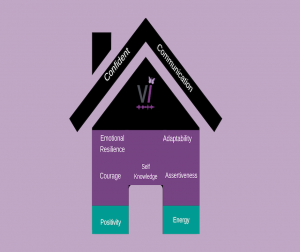Do you want to capture and keep your audience’s attention during your training sessions? You can learn to use powerful techniques to engage your listeners and hold their focus. One of the most important areas to consider is your voice. You can use it to create an immediate connection with your audience and encourage them to stay involved. In this blog post, we’ll discuss three ways to instantly hook your training audience with your voice. Let’s get started!
1. Be yourself when training
As a voice trainer and coach, I often work with business professionals who want to learn how to project confidence and authority. One of the most important things I tell them is that the more genuine they are, the more their audience will connect with them. As well as learning how to use the voice technically to sound grounded they also need to develop the confidence to speak with conviction.
Speaking with conviction starts with being authentic. It’s about being true to yourself and your message. The clearer you are about who you are and what you want to say, the more successful you will be. When you’re genuine, your voice will reflect that. People will respond positively to your sincerity and passion.

2. Use an appropriate tone
By this, I don’t mean the “tone” of what you say, but the actual tone of your voice. This relates to characteristics of your voice such as warmth, brightness, breathiness etc. These are linked to your thoughts, emotions and even your facial expression. Try speaking with a sad followed by a happy expression to compare the difference.
Knowing how to control the tone of your voice can be really helpful when dealing with people, especially in professional settings. You will have more success drawing your audience into what you’re saying and making them think if they relate to your tone. This technique also has an added bonus: it lets you use different tones for various purposes. For example, you can communicate feelings like surprise or curiosity without losing the quality of any spoken word. This means that your message will be clearer.
You need to know how your voice sounds to different people and speak in a way that will resonate with them. We all have an acute sense of what we understand from voices. So, you don’t want the room confused e.g. mistaking empathy with being patronised. It’s better to be clear so they feel respected and appreciated.
3. Vary your vocal training energy
Varying your energy – your pitch, pace and volume, will keep your audience engaged and interested. You will do this naturally to some extent when speaking in everyday situations. You may however find that variation is lost in training or presentation situations. This is probably because you are thinking more about the content to deliver than the impact you will make on the audience.
Sometimes you need to match your audience’s energy and at other times challenge it to bring them to where you want them to be. There are techniques you can learn to gain real control over your vocal energy without strain. With fine control, you’ll develop confidence and the ability to really nuance your message. Monotony will be a thing of the past.
Recap.
The next time you’re in a training situation, remember to be yourself, use an appropriate tone, and vary your pitch, volume, and pace. If you want to take your voice skills up a notch, try learning some of the techniques we talked about today. With just a little bit of practice, you can make sure that your audience is instantly hooked on everything you have to say.
If you’d like to know more about the ideas mentioned above do get in touch, I’m happy to chat.




